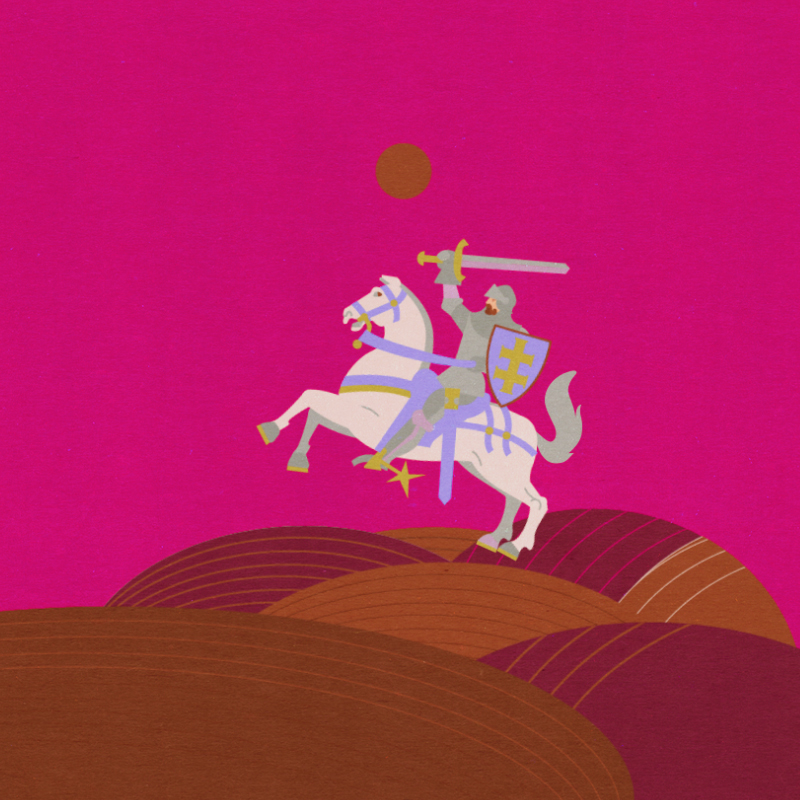Vytis – the Chaser of Enemies
> BACK TO 100 STORIESA coat of arms is the hallmark of the state. The arrangement and colours of the designs (animals, objects, plants) indirectly define or symbolise what is the most important to the state, what makes it unique. After the declaration of the re-establishment of the Republic of Lithuania on 16 February 1918, Vytis was chosen as the state coat of arms. The history of this symbol dates back to the fifteenth century.
Vytis differs from the coats of arms of other European countries because it depicts the ruler of the country rather than mythical or real animals. The name Vytis comes from the word vytis [Eng. chase]. So the ruler with the raised sword in the Lithuanian coat of arms is chasing his enemies away. If we remember how long and how hard Lithuania has fought for its independence, it is clear that the story behind the coat of arms very accurately describes the history of our country and its main goal – Lithuania wants to be free and independent.
A description of each coat of arms is important. The composition and colors of Vytis have hardly changed since the fifteenth century. The Lithuanian Heraldry Commission describes Vytis like this: ‘The red area of the coat of arms shows a silver armored rider on a white horse, holding a silver sword in his right hand raised above his head. There is a blue shield with a two-barred gold cross on the rider’s left arm. The horse’s saddle, saddlecloth, bridle and trappings are blue. The sword handle, the curb bits of the bridle, the stirrups and spurs, the fastening of the sheath and the harness’ details are gold.’ The designers of the current version of the coat of arms are Juozas Zikaras and Arvydas Každailis.
Historians say that Duke Algirdas was the first to use Vytis in the Grand Duchy of Lithuania. Later, this coat of arms not only became a symbol of the Gediminas dynasty, but also of the entire state. In the sixteenth century, when Lithuania and Poland formed the Commonwealth, the common coat of arms depicted Vytis next to the Polish symbol of the Eagle. When Lithuania was occupied by the Tsarist Russian Empire in the eighteenth century Vytis was included in the coat of arms of the Russian Empire as a sign that Lithuania was a province of the Russian Empire. And in 1863, the Vytis coat of arms was used as a symbol of resistance to Russia.
Although the name of Vytis has changed many times, it has always retained the meaning of chasing and pursuing enemies. The oldest name of the Lithuanian coat of arms is Slavic – pagaunė [Pol. pogoń, Eng. pursuit]. The sixteenth-century Lithuanian coat of arms with the rider was called waykitoias [Eng. chaser] and waykimas [Eng. chase] – words of Samogitian origin. Simonas Daukantas proposed that the coat of arms be named Vytis in the nineteenth century.
Although Vytis was chosen as the coat of arms of Lithuania in 1918, the country's coat of arms was changed again in 1940, when Lithuania was occupied by Soviet Russia. Lithuania was renamed the Soviet Socialist Republic of Lithuania, and its coat of arms became a wreath of oak branches and wheat stalks with the rising sun, hammer and sickle. After the restoration of the Republic of Lithuania in 1990, Vytis was made the state coat of arms again.

